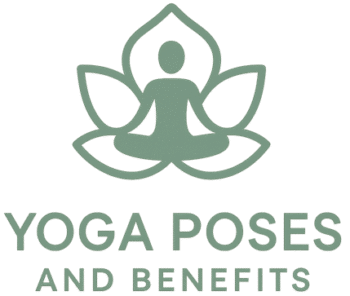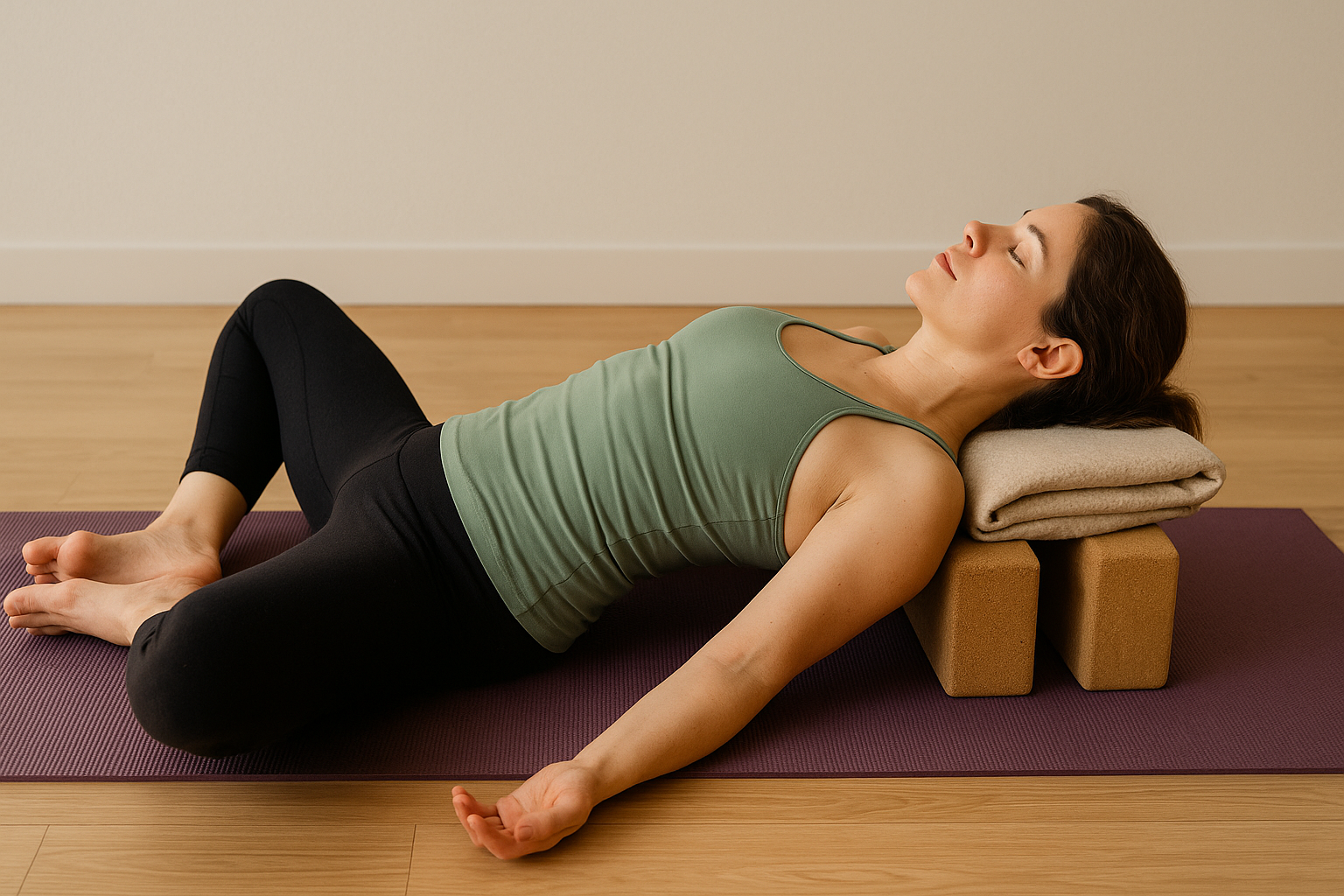Why Practice Yin Yoga Poses with Props
Yin yoga emphasizes long, meditative holds that target connective tissue and fascia. Without proper support, tension often builds, making it difficult to stay still for several minutes. Props such as bolsters, blocks, straps, and blankets allow practitioners to relax safely and access the energetic benefits of yin.
For yoga teachers, introducing props enhances accessibility and inclusivity. Students with limited mobility can participate fully, while advanced practitioners discover new levels of surrender. Supported yin yoga poses also calm the nervous system, promoting mindfulness meditation and smoother transitions into pranayama or savasana.
By using props strategically, yin yoga becomes sustainable, restorative, and deeply transformative.
Essential Props for Yin Yoga Practice
Every prop serves a specific role. Bolsters provide cushioning for the spine in restorative yoga backbends. Blocks, whether foam or cork, stabilize joints and elevate the body in postures inspired by Iyengar Yoga. Straps extend reach in forward folds, while blankets add warmth or gentle lift beneath sensitive areas.
Recommended essentials for yin yoga:
- Bolsters (Manduka or Hugger Mugger): Chest openers, gentle backbends
- Blocks (Gaiam or cork): Elevate hands, knees, or hips
- Straps: Lengthen hamstrings in seated folds
- Blankets: Add comfort under the head or knees
Creating a supportive environment also means encouraging students to experiment with placement. When props are adjusted mindfully, alignment improves, strain reduces, and stillness becomes possible.
Foundational Yin Yoga Poses with Props
Reclined Butterfly (Supta Baddha Konasana) with Blocks
This classic posture demonstrates how props transform yin yoga. Placing blocks under each thigh releases hip tension and makes the pose restful rather than straining. With feet together and knees supported, students remain in the shape for 5–7 minutes while focusing on steady breath.
Teachers may add a folded blanket under the head for additional grounding. Supported Reclined Butterfly often appears at the beginning or end of yin yoga sequences because it encourages openness across the groin and inner thighs without forcing flexibility.
Heart Bench for Opening the Chest
The heart bench combines blocks and a bolster to create a restorative chest opener. By stacking blocks at two heights and draping a bolster over them, practitioners recline onto the setup. This supported backbend improves posture, expands lung capacity, and stimulates meridian lines connected to the heart and lungs.
For alignment, ensure the setup feels stable before reclining fully. Teachers can adjust block height based on body type, making the pose accessible to both beginners and seasoned practitioners. Many yin or restorative yoga classes feature the heart bench as a way to counteract daily forward hunching.
Supported Child’s Pose with a Prop
Child’s Pose becomes more restorative with props. Placing a bolster lengthwise under the torso relieves pressure on hips, knees, and the spine. The forehead can rest on a block if the bolster feels too low. Arms relax either forward or beside the body, encouraging the parasympathetic nervous system to engage.
This supported variation works well as a closing posture or transition between deeper yin yoga poses. Teachers often recommend it for grounding anxious students or resetting energy mid-practice.
Advanced Yin Yoga Poses Enhanced with Props
Experienced practitioners also benefit from supportive tools. Props refine alignment and enable longer holds without overexertion.
- Dragon Pose with blocks: Hands rest on blocks to ease hip intensity while maintaining spinal alignment.
- Caterpillar Pose with bolster: Torso supported by a bolster prevents back rounding during long forward folds.
- Legs-Up-the-Wall Pose with blanket: A folded blanket under the sacrum increases comfort during this gentle inversion.
Even in advanced practice, props encourage balance between effort and surrender—the essence of yin. Teachers can remind students that props are not shortcuts but instruments of awareness.
Common Mistakes When Using Props in Yin Yoga
Improper use of props limits benefits. Over-reliance leads to collapse rather than relaxation, while incorrect placement creates discomfort. Teachers should watch for common errors:
- Blocks set at awkward angles under the back
- Bolsters positioned too high, creating strain
- Neglecting to adjust prop height for body proportions
- Using so many props that the pose feels cluttered
Modeling mindful setup prevents these issues. Proper demonstration ensures students stay engaged and supported throughout their yin yoga poses.

Bringing Yin Yoga Poses with Props into Daily Practice
Props can enrich home practice as much as studio sessions. A short yin sequence might include Supported Child’s Pose, Reclined Butterfly with blocks, and Legs-Up-the-Wall with a folded blanket. Each posture can be held for 3–5 minutes to reset after a busy day.
Daily practice tips:
- Keep bolsters, blocks, and blankets accessible
- Set aside at least 15 minutes in a quiet space
- Focus on breath and body sensations
- Use prop setup as a mindfulness ritual
Bali yoga retreats often highlight prop care and intentional space setting as part of honoring yoga practice. Bringing that same awareness into everyday life ensures yin yoga remains sustainable and grounding.
Final Thoughts on Yin Yoga and Props
Props elevate yin yoga by transforming difficult shapes into restorative experiences. Clean, well-cared-for blocks, bolsters, and straps create trust between teacher and student. Whether teaching restorative yoga, sequencing for Yoga Alliance certification, or simply guiding home practice, supported poses reinforce the philosophy that yoga is about awareness, not achievement.
Mindful use of props reflects the discipline of yoga itself—attention to detail, respect for the body, and dedication to balance. Supported yin yoga poses, from heart bench variations to Supta Baddha Konasana, remind practitioners that surrender can be just as powerful as effort.
Do you use props in Yin Yoga?
Yes, props are commonly used in Yin Yoga to support the body in passive poses for extended periods. Bolsters, yoga blocks, and blankets help maintain proper alignment and enhance comfort, especially in poses like Butterfly, Sphinx, and Supported Child’s Pose.
What props are used in Yin Yoga?
Yin Yoga commonly uses props like yoga blocks, bolsters, and blankets to support the body in passive poses for extended periods. These tools help maintain alignment and comfort in asanas such as Supported Butterfly or Reclining Twist, allowing deeper muscle relaxation and connective tissue release.
Can you do yin yoga without props?
Yes, you can do yin yoga without props, but using tools like bolsters, blocks, and blankets enhances comfort and support in long-held poses. Props help maintain proper alignment in poses like Butterfly, Dragon, and Saddle, especially during extended holds lasting three to five minutes.
Is yin yoga harder than vinyasa?
Yin yoga is not necessarily harder than vinyasa, but it challenges the body in different ways. While vinyasa emphasizes dynamic movement and strength through flowing sequences, yin yoga requires holding passive poses for extended periods using props like bolsters and blocks. Both styles demand focus and flexibility but serve different physical and mental purposes.

